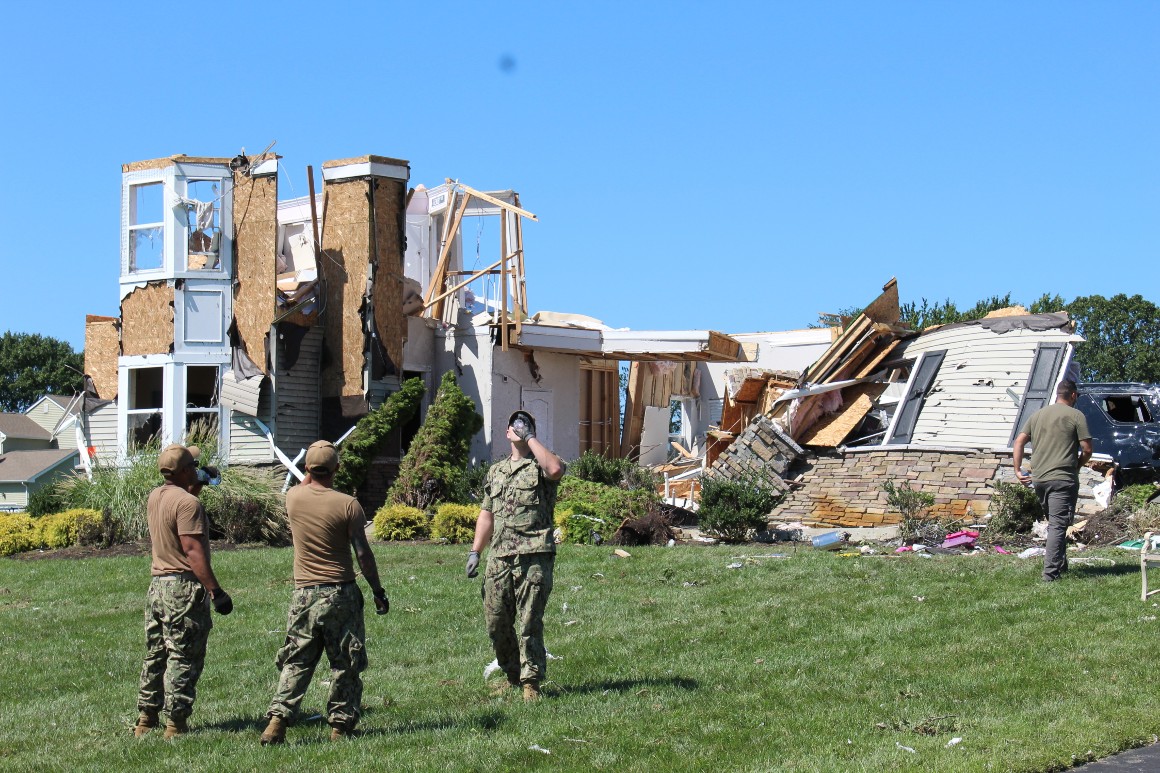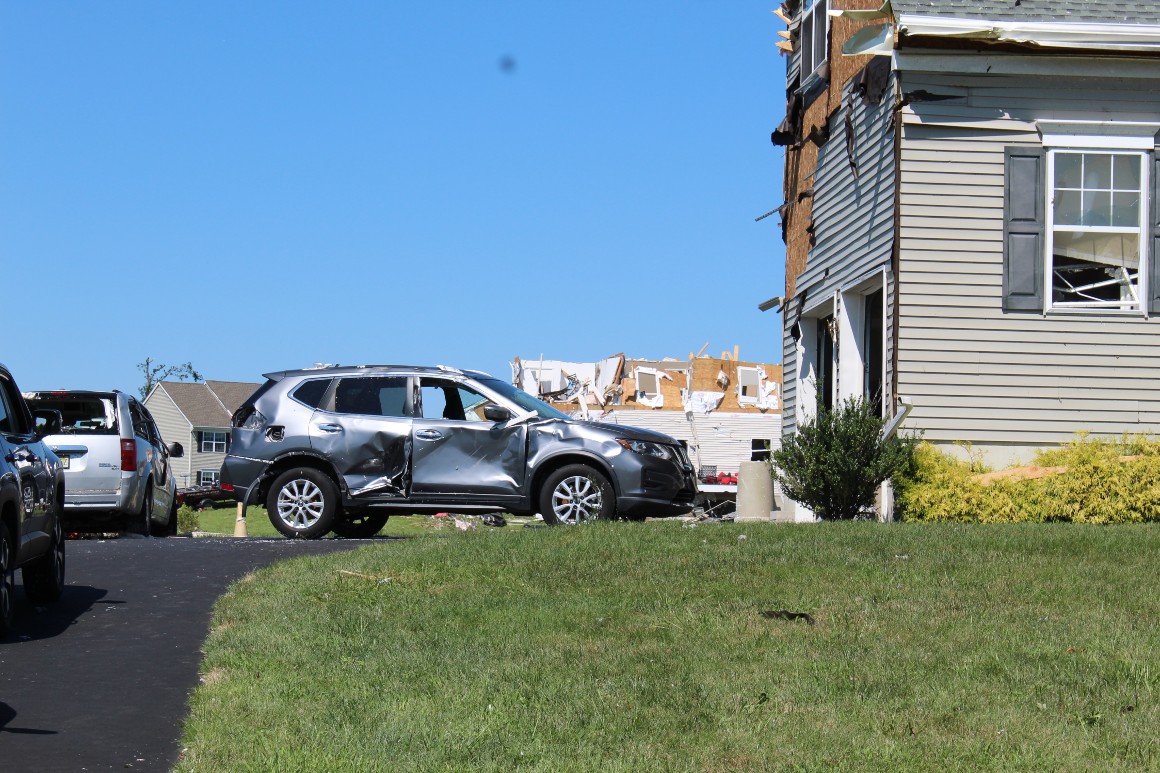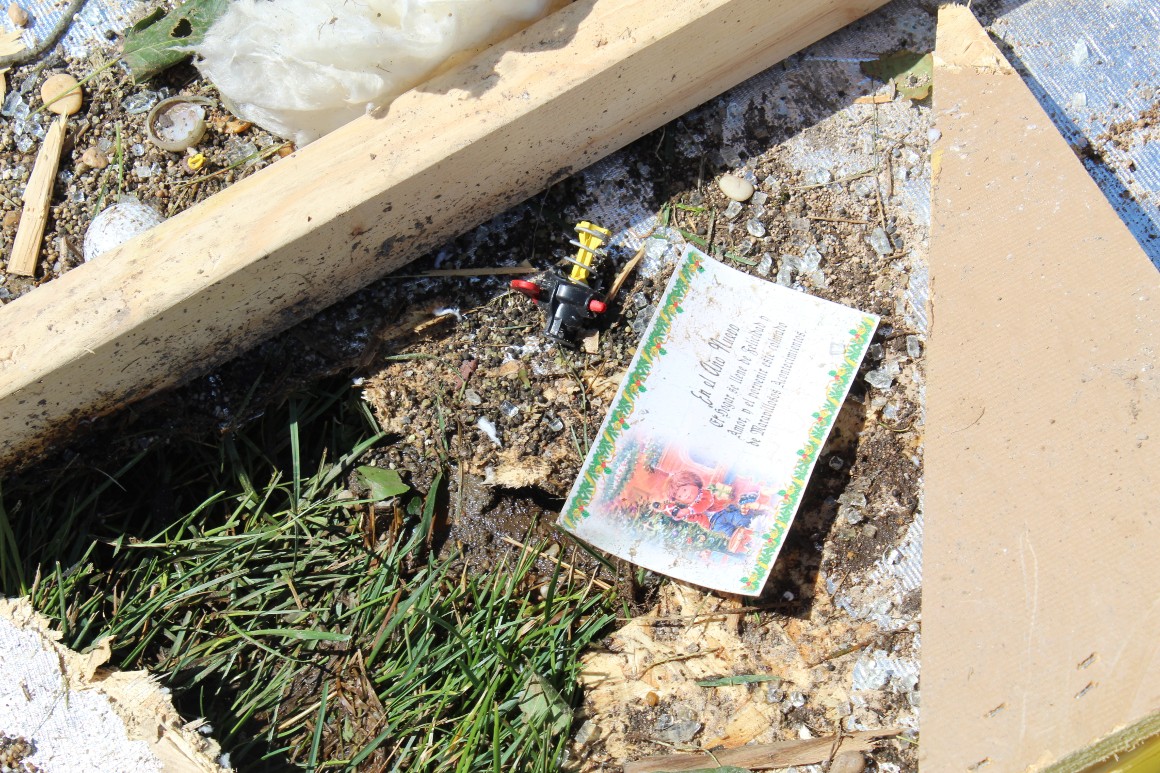
MULLICA HILL, N.J. — A stunned Gov. Phil Murphy examined the wreckage from a tornado that had plowed through a small New Jersey suburb. Pieces of homes littered the area, along with toppled trees, smashed windows, a toddler’s shoe.
New Jersey didn’t get tornadoes. At least, not ones like this.
“It’s crushing, especially when you talk with people whose homes have been under water, or I'm sure families that have lost loved ones,” he said in the hours after the remnants of Hurricane Ida ushered in tornadoes. “These storms are more frequent and more intense, and that's the world we're living in right now.”
Now, Murphy and other governors near him are bracing for more — and worse — to come.
The Northeast is no stranger to storms, but the remnants of Hurricane Ida that brought this damage in September were an unprecedented calamity thought to be a sign of a changing climate. They carried record-setting bursts of rain followed by massive inland flooding in the nation’s biggest city.

Now there’s worry storms made more intense and frequent by a warming planet could become a fact of life for northeast states, much the way wildfires and drought have beset the West. As that happens, governors more familiar with snowy winters will increasingly be forced to turn at a moment's notice to disaster mode, setting aside elections, budgets and normal policymaking to become emergency coordinators. They’ll likely face questions about what’s been done to prepare for the worst — and what could or should have been to save lives.
Extreme weather can lead to political peril for governors. Perhaps most notably, Democratic Gov. Kathleen Babineaux Blanco didn’t run for reelection in Louisiana after 2005‘s Hurricane Katrina and widespread criticism of her response. Successfully steering through a disaster can also have its political upsides: New Jersey Republican Gov. Chris Christie’s approval rating soared in the aftermath of 2012’s Hurricane Sandy as he comforted the afflicted, embraced a Democratic president and promised to rebuild. Over time, though, constituents turned on Christie, too, as it took years to get victims back in their homes.
Murphy, a Democrat who is running for reelection next month, said the topic of climate change and extreme weather now “comes up regularly” when he talks with fellow governors. Some are his neighbors, like newly sworn-in Democratic Gov. Kathy Hochul in New York or Republican Gov. Charlie Baker in Massachusetts, who called 2020’s combination of pandemic and extreme weather the “longest year of my life.” Murphy also talks with California Gov. Gavin Newsom, a fellow Democrat who has presided over what seems like one rolling disaster of drought and fire.
“We're all comparing notes,” Murphy said in an interview. “And I think we all feel like we're being dragged along.”
In Pennsylvania, Democratic Gov. Tom Wolf said that during his nearly seven years in office he’s seen short periods of intense rain that cause destructive flooding, including major flooding after Ida along the Schuylkill River that cuts through Philadelphia. Things seem to be getting worse, he said.
“The West is experiencing their own awful climate events, drought and fires. Ours is flooding, but I think they're all the pieces of climate change,” Wolf said in an interview. “We've got to acknowledge that.”
Weather is one thing, policies another. The growing number of extreme weather events in the Northeast could spur state leaders to put even more pressure on Washington to act in a big way. Federal action, Wolf said, doesn’t seem to be keeping up with changing conditions. In 2019, for instance, Pennsylvania had more than 5,000 homes that were damaged by floods, but there wasn’t a single flood that triggered FEMA’s requirements to provide assistance to victims.
Wolf said he is working to create a fund for residents who are in a cash crunch right after a disaster. Often what people need is a few hundred dollars to stay in a hotel, or money to buy food after their refrigerator was destroyed.
Those are the small things.
There are also big things, like working to reduce the release of greenhouse gases that are causing climate change in the first place and building up infrastructure to be resilient to the next storm.
“Those are things that I can do,” Wolf said. “Otherwise, what governors are left doing is what I think Phil Murphy, and I and some of the others do. You just go out — it’s like going to a funeral: You wring your hands and say, ‘I’m so sorry for your loss,’ but I’m not sure there’s much I can do.”
Hochul’s first weeks in office were another demonstration that no matter what the nation’s governors are dealing with, bad weather is going to make it worse.
She took over in the tumultuous wake of Andrew Cuomo’s downfall and during a pandemic. That seemed like enough to deal with — then the rain came.
Hochul, a Buffalo native who is used to some bad weather, was sworn in just days after Hurricane Henri made landfall and swept through New York, setting one-hour rain record. About a week later, she was already planning to celebrate her first legislative accomplishment, a four-month deal to keep struggling New Yorkers from being evicted, when Ida arrived.
The storm quickly broke Henri’s rain record and did far more deadly damage. Ida’s deluge killed over 40 people, flooding swaths of New York City and New Jersey with so much water that it shocked public officials. New York City Mayor Bill de Blasio responded, in part, by blaming meteorologists.

And Hochul, instead of celebrating the housing deal, declared a state of emergency.
Her incoming director of state operations, Kathryn Garcia, hadn’t officially started the job — which comes with a vast mandate to oversee most areas of the executive branch. But she stepped in to advise Hochul on the storm response, helping her understand what questions to ask of other officials and who to talk with to get the help the state needed.
Garcia, previously New York City’s sanitation commissioner and a candidate for mayor, said Hochul was mindful of the need to put the right people and processes in place that could handle extreme weather, in part so that the governor could get other things done, too.
“Natural disasters and responding to them are part of any elected job. It is about putting a structure in place, the teams in place, so that you can address those immediate impacts, but then continue to ensure that your longer-term strategic agenda is fulfilled,” Garcia said. “She knows she can't stay in emergency mode every single second.”
In California, Newsom has been in emergency mode virtually every day he’s been governor.
Three weeks after he took office in January 2019, California’s largest utility declared bankruptcy due to the billions of dollars in costs it faced because of wildfire-related damage it had helped cause.
Since then, the state has suffered one wildfire after another, including nine of the 20 largest fires in state history. Blazes across the Pacific region this summer sent smoke all the way to the East Coast.
Newsom came to office focused on other, more typically urgent issues, like housing and jobs, but the fires have become an almost constant emergency for his administration. Similarly, he’s had to contend with rolling blackouts as heat waves spiked energy demand, and he’s flirted with issuing statewide water restrictions as the West faces one of the worst droughts in a generation.
Now, with a failed recall attempt behind him and the pandemic easing, Newsom is squarely focused on climate change, senior climate adviser Lauren Sanchez said in a recent call with reporters.
“He is feeling a real moral imperative around this issue right now,” Sanchez said. “To wax philosophically, he has four young children and has asked us to all manage this crisis like the emergency it is so that we can leave a livable planet for our children.”
Newsom has also been candid about the difficulty he’s faced governing through crisis after crisis. When asked by a reporter about what goes through his head when he’s surveying destruction, Newsom said his personal reactions are increasingly more intense.
“It's not intellectual anymore,” he said, “it’s emotional.”

Jeff Schlegelmilch, the director of the National Center for Disaster Preparedness at Columbia University, said disasters are putting pressure on every level of government. The pandemic, along with extreme weather, opened up questions about how the government can be in emergency response mode when there is always an emergency.
Schlegelmilch cited a 2009 study that found voters reward the incumbent presidential party for delivering disaster relief — but not for investing in preparedness. That’s despite the fact that one dollar spent on disaster preparation was worth $15 in terms of the damage that’s prevented. The result? Local governments are often awaiting aid rather than planning ahead.
“The disaster assistance fund through FEMA used to be like 911,” he said. “Now it’s become like 411 — it’s being used a lot more frequently.”
Yet, governors are now also talking about trying to get ahead of extreme weather. One of Murphy’s signature campaign goals in 2017 was a clean energy and climate change plan. Asked whether Ida can help him, Murphy said he hopes it does.
“I say this with a heavy heart because, you know, we're talking about a storm that killed 30 people, so this is not something in any way shape or form I wish for — to the contrary — but I hope it adds. I can't believe it's deleterious or deletive from our push,” he said.
“It's got to be, sadly, a very stark, tragic reminder that we’ve got to act, we’ve got to get out ahead of this, we can’t continue to be dragged by this.”
Marie French from New York, Colby Bermel from California and Lisa Kashinsky from Massachusetts contributed to this report.
----------------------------------------
By: Ry Rivard and Katherine Landergan
Title: ‘We're being dragged along’: Extreme weather puts governors to the test
Sourced From: www.politico.com/news/2021/10/13/extreme-weather-climate-change-governors-515860
Published Date: Wed, 13 Oct 2021 03:31:37 EST






